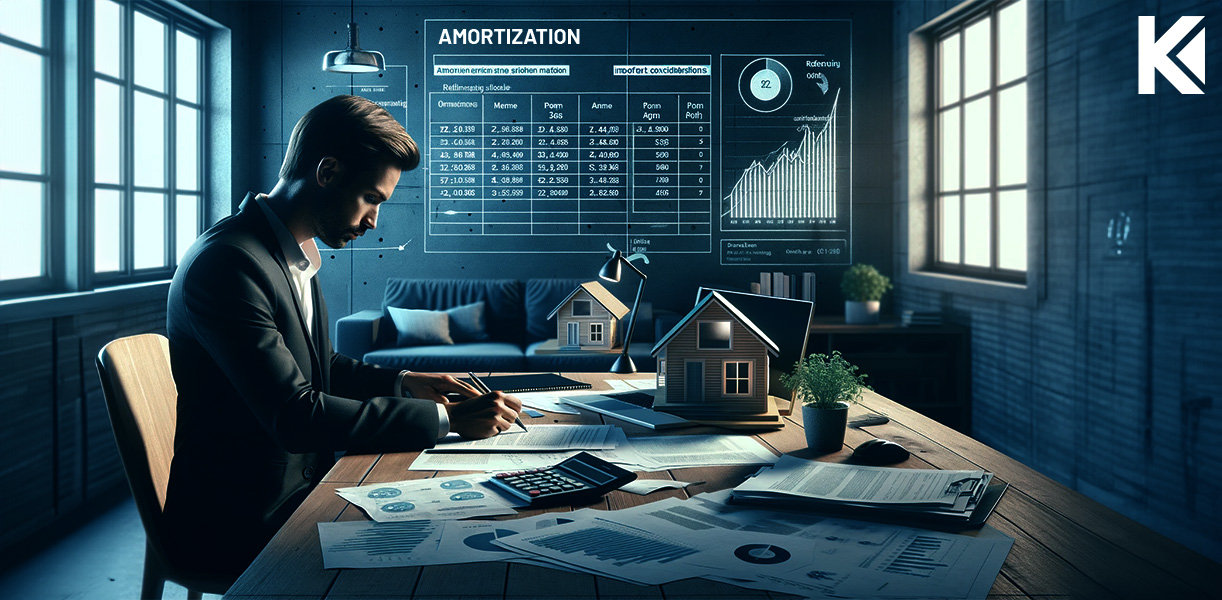When it comes to managing your mortgage, refinancing is a strategic move that can offer numerous benefits, from lowering your interest rate to reducing your monthly payment. However, one critical aspect that homeowners should consider in the refinancing process is the role of amortization. Understanding how amortization works in the context of refinancing can help you make a decision that aligns with your long-term financial goals.
Understanding Amortization
Amortization is the process of paying off a loan through scheduled, fixed payments over a set period. These payments are allocated towards both the principal amount of the loan and the interest accrued. In the early years of a mortgage, a larger portion of each payment is directed towards interest, with the balance shifting more towards the principal over time.
Refinancing and Amortization: What Changes?
Refinancing essentially means replacing your existing mortgage with a new one, which can come with a different interest rate, loan term, and monthly payment. Here’s how it can affect your amortization schedule:
- Resetting the Amortization Schedule: When you refinance, you start a new amortization schedule. If you choose a longer-term loan, you may lower your monthly payments but increase the amount of interest paid over the life of the loan. Conversely, a shorter-term loan might raise your monthly payments but significantly decrease the total interest paid.
- Interest Savings: Refinancing to a lower interest rate not only reduces your monthly payment but also alters the amortization schedule in your favor. More of your payment will go towards the principal sooner, building equity faster and reducing the total interest paid.
- Cash-Out Refinancing and Amortization: Some homeowners opt for cash-out refinancing, which can affect your amortization schedule by increasing the loan balance and potentially extending the loan term. While this provides liquidity, it’s essential to consider how it impacts the total interest paid and the time it takes to pay off the loan.
Making Informed Refinancing Decisions
To make a refinancing decision that best suits your financial situation, consider the following:
- Calculate Long-Term Costs: Use an amortization calculator to compare the long-term costs of your current mortgage versus the refinanced loan. Pay close attention to the total interest to be paid over the life of the loan.
- Consider Your Financial Goals: Are you looking to lower your monthly expenses, or is paying off your mortgage sooner a priority? Your objectives will significantly influence whether refinancing and its effect on amortization make sense for you.
- Don’t Overlook Closing Costs: Refinancing comes with closing costs, which can add up. Consider how these immediate expenses weigh against the long-term savings from a new amortization schedule.
- Professional Advice Can Help: Consulting with a mortgage advisor can provide personalized insights into how refinancing will affect your amortization schedule and overall financial strategy.
Conclusion
Refinancing can be a powerful tool in managing your mortgage and achieving financial flexibility. However, understanding the role of amortization in this process is crucial. By carefully considering how refinancing affects your loan’s amortization, you can make a decision that not only meets your current needs but also advances your long-term financial health. Whether aiming for lower monthly payments, a shorter loan term, or accessing equity, a well-informed refinancing choice can significantly impact your financial journey.






